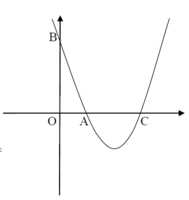Hello,
I have the following problem:
Given the parabola y=x^2-4x+3 find the area and the parimeter of OAB
A=(1,0), B=(0,3), C=(3,0)
I calculated the area
[MATH] S oab= \int ^{1}_{0}\left( x^{2}-4x+3\right) dx =\left| \left( \dfrac {x^{3}}{3}-\dfrac {4x^{2}}{2}+3x\right) \right| \ = \left| \left( \dfrac {1}{3}-\dfrac {4}{3}+3\right) -0\right| \ = \dfrac {4}{3} [/MATH]
However i am stuck into the parimeter.
[MATH] P oab=\left| OA\right| +\left| OB\right| +\left| AB\right|\\ = 1 +3 + \int ^{1}_{0}\sqrt {1+\left( \dfrac {d}{dy}\right) ^{2}dx}\\ \begin{aligned}=4+\int ^{1}_{0}\sqrt {1+\left( 2x-4\right) ^{2}}d_{x}\\ =4+\int ^{1}_{0}\sqrt {4x-16x+12}dx\\ =4+2\int ^{1}_{0}\sqrt {x^{2}-4x+\dfrac {17}{4}}dx\\ =4+2\int ^{1}_{0}\sqrt {\left( x-2\right) ^{2}+\dfrac {1}{4}}dx\end{aligned} [/MATH]
Here i tried to substitute u= x-2, but i couldnt solve it.
I have the following problem:
Given the parabola y=x^2-4x+3 find the area and the parimeter of OAB
A=(1,0), B=(0,3), C=(3,0)
I calculated the area
[MATH] S oab= \int ^{1}_{0}\left( x^{2}-4x+3\right) dx =\left| \left( \dfrac {x^{3}}{3}-\dfrac {4x^{2}}{2}+3x\right) \right| \ = \left| \left( \dfrac {1}{3}-\dfrac {4}{3}+3\right) -0\right| \ = \dfrac {4}{3} [/MATH]
However i am stuck into the parimeter.
[MATH] P oab=\left| OA\right| +\left| OB\right| +\left| AB\right|\\ = 1 +3 + \int ^{1}_{0}\sqrt {1+\left( \dfrac {d}{dy}\right) ^{2}dx}\\ \begin{aligned}=4+\int ^{1}_{0}\sqrt {1+\left( 2x-4\right) ^{2}}d_{x}\\ =4+\int ^{1}_{0}\sqrt {4x-16x+12}dx\\ =4+2\int ^{1}_{0}\sqrt {x^{2}-4x+\dfrac {17}{4}}dx\\ =4+2\int ^{1}_{0}\sqrt {\left( x-2\right) ^{2}+\dfrac {1}{4}}dx\end{aligned} [/MATH]
Here i tried to substitute u= x-2, but i couldnt solve it.

